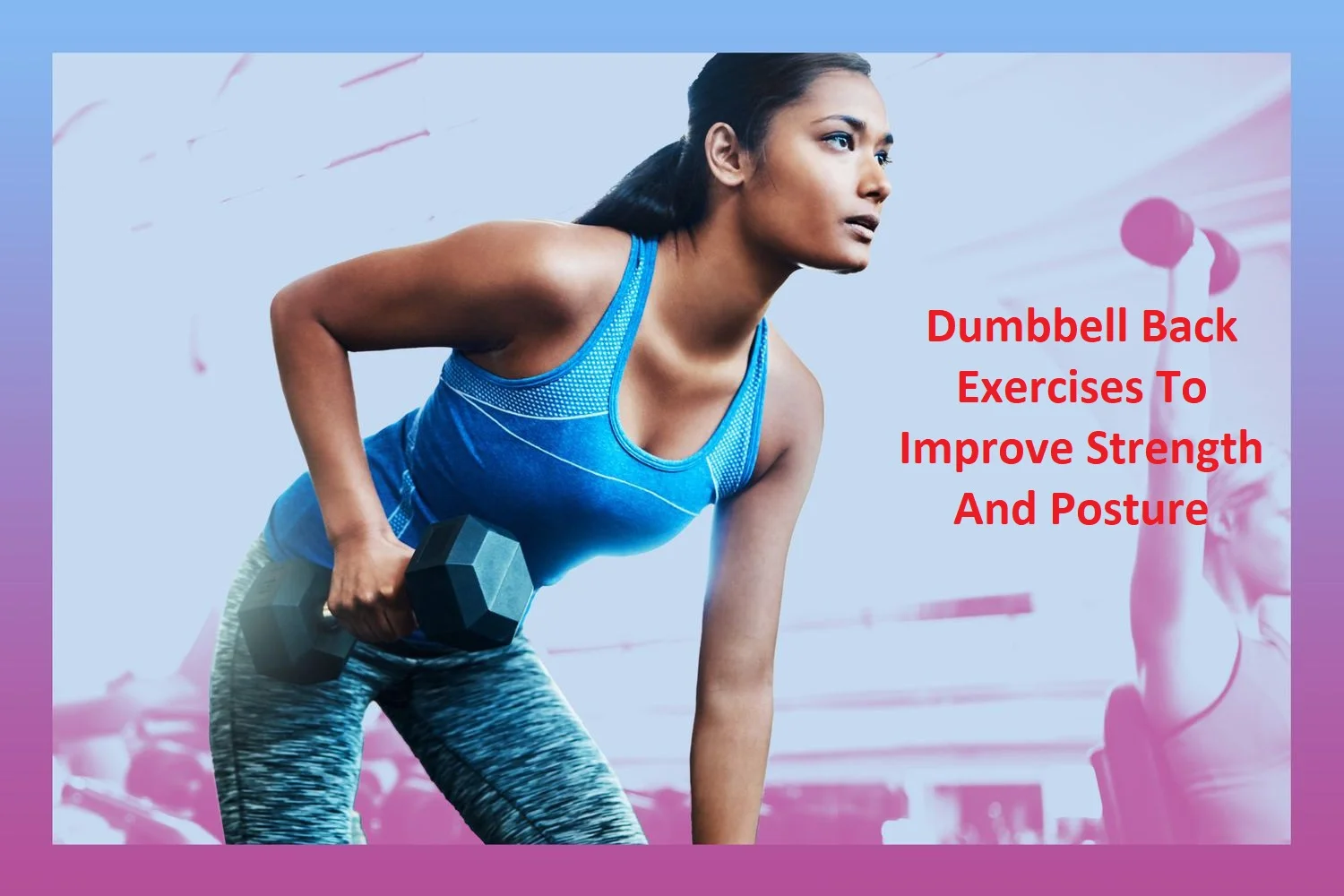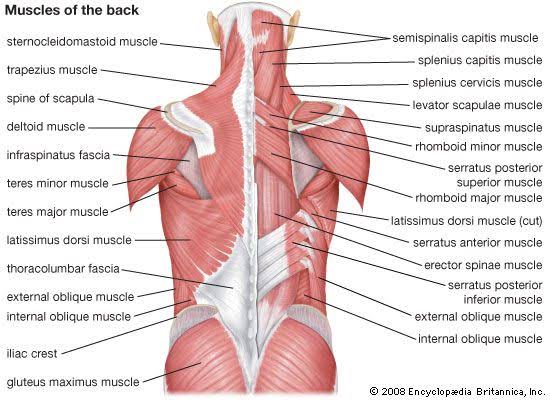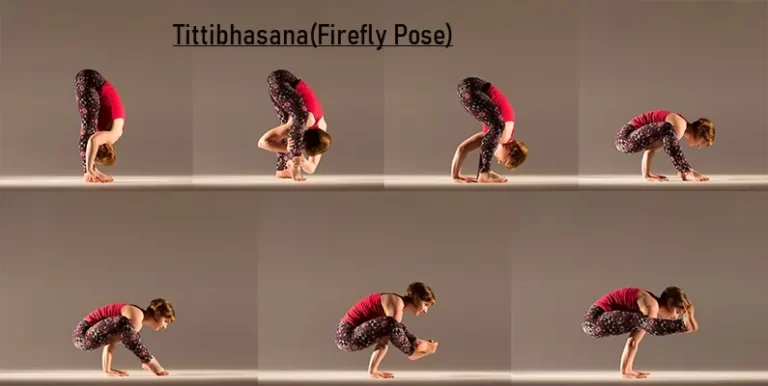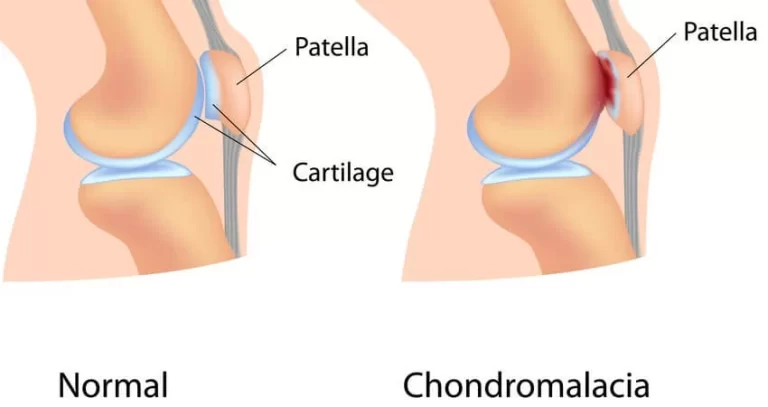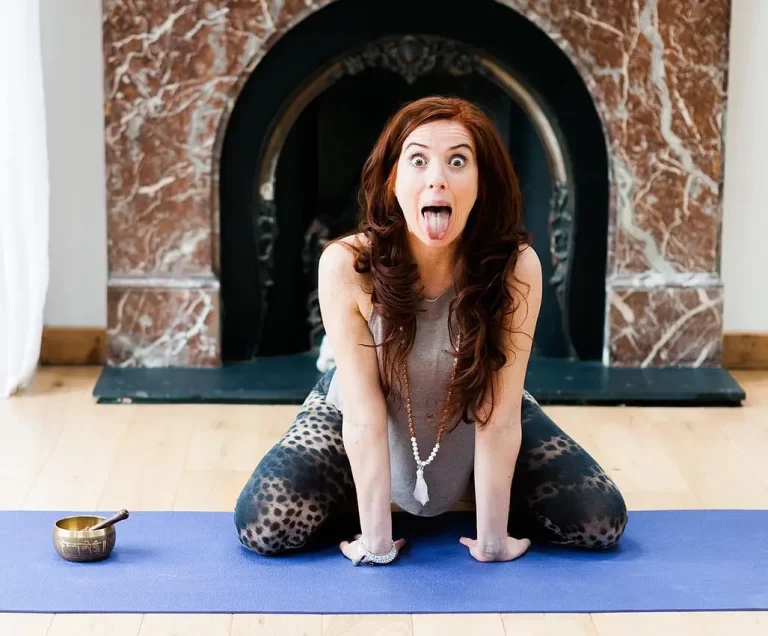Dumbells Back Exercise To Improve Strength And Posture
Table of Contents
Introduction:
Improving back strength and posture is crucial for overall health and well-being. One effective way to achieve these goals is by incorporating dumbbell exercises into your workout routine. Dumbbells provide a versatile and accessible tool for targeting the muscles in your back, helping to build strength, stability, and proper alignment.
- Around the world, we spend about 20000 crores a year managing back pain. It’s so universal that, according to the National Institute of Health: Back pain is one of the most common reasons all people seek medical care. But exercises that strengthen your back are one of the best tools in preventing back pain completely while making time for exercise can be inspiring and preventing back problems before they start is priceless.
- Even if you do not do a lot of heavy lifting, you might notice the effects of weak back muscles in the form of slouching posture. slouching posture(a drooping or bending forward of the head and shoulders) may seem like no big deal, but it is a symptom of back muscle weakness that you do not want to ignore. The latest research suggests that the risk of severe back pain increases over the age of 65. So, definitely do not ignore the effect of something causing trouble or back pain. It could be no big deal today, but you absolutely want to continue to do something.
- Even if you do not do a lot of heavy lifting, you might notice the effects of weak back muscles in the form of slouching posture. slouching posture(a drooping or bending forward of the head and shoulders) may seem like no big deal, but it is a symptom of back muscle weakness that you do not want to ignore. The latest research suggests that the risk of severe back pain increases over the age of 65. So, definitely do not ignore the effect of something causing trouble or back pain. It could be no big deal today, but you absolutely want to continue to do something.
- Back strength as well helps you feel and look better. According to studies, people find those with good posture to be more attractive than those without. As if not enough, research also demonstrates that sitting up straight, which you can only achieve if your back is strong, is linked to greater levels of confidence, happier moods, and a better ability for dealing with stress.
- All you need of dumbbells to start choosing your back muscles at home. Now some of my favorite exercises to note and strengthen the back muscle. If you want to build balanced strength all over your body, add the best dumbbell back exercises to your routine day workout.
- There are countless benefits to working your back: strengthening your back muscles is important because it helps improve muscle imbalances and posture. Particularly when we spent lots of time sitting, our back muscles have to be weak. This absence of proper tension in your muscles can make a rounding of your shoulders or a hunched position(leaning forward with your shoulders raised, or bending your back and shoulders into a rounded shape) more likely, which is where back exercises show up useful.
- Then Weak back muscles are associated with lots of impaired mobility in your upper back, making it difficult to move your shoulder blades effectively. Many times people will start to shoulder injuries from that. They do not have enough mobility and strength in the upper back, and when they do any kind of exercises that target the ‘pushing’ muscles( like the shoulder or chest muscles)that is when we get into trouble. (While your rear deltoids are technically part of your shoulders, they are also small but important back muscles to focus on strengthening for this reason, too).
- It is important to note that your lower back muscles are also regarded as part of your core, and there are lots of benefits to strengthening both. Strengthening of your back and core muscle works to hold on to your spine supported affects standing posture to gait, balance, and even joints. That is because good alignment takes the pressure from there your joints, and that provides major injury prevention.
- Keeping your back in five stars is important. we engage the muscles of the back in almost every movement we perform. A strong back is necessary for performing twisting and pulling motions with softening and without injury.
- Working the back muscles is a quite great benefit. A strong back will assist in spine alignment and stabilization. This will give support and power to the rest of the body to perform exercises and also daily activities. For example, when you pull a heavy door shut or pull a lawnmower(a machine for cutting grass) on lawns to start, those are your back muscles firing.
- Dumbbells make it easier for beginners to start weight training since they allow you to practice with various loads.
- The benefits of dumbbell back exercises are not only for beginners. Experienced lifters can also use the instrument for effective workouts right on body weight and heavy barbell training(thick and designed to stay rigid under heavy loads). Dumbbells provide originality-so dumbbell exercises should be a major principle in any comprehensive back muscle training.
The Benefits of Dumbbell Back Exercises:
- With a pair of dumbbells, you may train the critical muscle groups that support your shoulder blades and maintain good posture while also developing the back strength necessary for performing following chin-ups and pull-ups (upper body strengthening exercises).
- The dumbbells are the single most critical back exercise. It is an exercise that trains the rhomboid muscle, midback stabilizers muscle, and latissimus dorsi muscle all at once-and it is a key dumbbell exercise that helps equalize life.
- Adding dumbbell back exercises into your routines helps you build back muscle and strength and layering thickness in between your shoulder blades and throughout your upper back.
- It can be easy to totally major muscle groups in your workouts. It also helps you achieve your back strength and posture.
- Back muscles play an essential role in helping you move, stand up straight, and breathe(inhaling and exhaling involve the back muscles). They help stabilize your torso and spine during body workouts so that you may rotate, bend, flex, and lengthen your back.
When we talk about your back, which back muscles are we targeting?
- Primary muscles in the back include the:
- Latissimus dorsi-The area below your armpits down the sides of your back
- Rhomboids, The mid-upper back
- Trapezius-Run from your neck to your mid-back
- Erector spinae- Run along your spine
- All the exercises below target a combination of these muscles and similarly target other upper body muscles in your shoulders, chest, and arms.
- The muscles in your back are categorized into three muscle groups-superficial, intermediate, and intrinsic. The research advises that strength workouts, such as dumbbell exercises, can target all of their muscle group.
- Superficial muscles-Help with neck and shoulder movements and support moving your upper limbs.
- Intermediate muscles-Support the respiratory system and rib cage(thoracic cage).
- Intrinsic muscles-Assemble your vertebral column’s (your head to your tailbone’s) muscles, tendons, and bones to move.
- There is no doubting the importance of a strong back to your general well-being and health, but for you to see the advantages, your back has to be properly trained. Involves warming up before facilitating and lifting with proper form all over this dumbbell back workout.
- Building back strength is very important. In this article, we are going to focus on dumbbell back exercises-including both upper-back dumbbell exercises and lower-back exercises with pair of dumbbells.
Benefits Of Strengthening Your Back:
- Among the many muscles that make up the back are the latissimus dorsi, trapezius, and rhomboids. These muscles, which extend from your neck to your waist, are essential for performing daily tasks.
- Unfortunately, extended periods of sitting and bending over a computer can cause these important muscles to become weak. More benefits of strengthening your back above just pain relief include improved mobility, posture, and general quality of life.
- Strong back muscles can help you maintain a straight and healthy posture by opposing the need to bend over and round your shoulders.
- The exercises you can do with a dumbbell to strengthen your back, improve your posture, and prevent the effects of a sedentary lifestyle will be talked about in the section after this one.
The Importance of Back Strength and Posture:
Improve posture:
- Improving your posture through strengthening your back will eventually reduce your chance of injury. You’re going to injure yourself if you start walking anatomically incorrectly. Imagine keeping a neutral spine, a chin parallel to the floor, rolled-back shoulders, and even hips.
Prevent injury:
- The main power source of the body, the back, can reduce pain in the neck, hips, and shoulders. You become hurt if your back is not sturdy. In addition, research indicates that strengthening your back muscles might help reduce back discomfort.
Secure stability:
- Although the structure of your back is complex, the muscles that surround your spine are crucial for stability and strength. All of the different muscle fibers around your spine get more powerful as you exercise [your back], making them less flexible. By building up the muscles that surround your spine, you can reduce chronic back pain and ease the physical strain of daily activities like lifting up children or carrying groceries.
This Dumbells Exercise Are Included:
Different types of dumbbell exercises are:
Good mornings with dumbbells
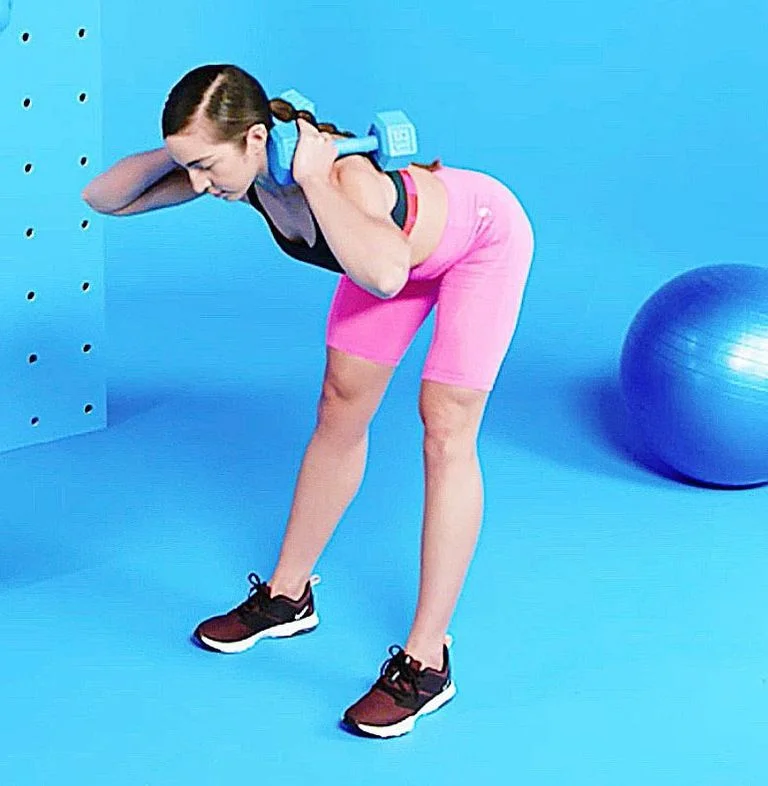
How to do it:
- Grab a dumbbell in each hand and hold it on your shoulders with the palms facing inwards while standing with your feet shoulder-width apart.
- Get down slightly and keep a straight back and a strong core as you hinge at the hips.
- When your torso is parallel to the floor, push your hips back.
- 10 times, beginning from the starting position.
Upright row

How to do it:
- Grab a dumbbell in each hand while standing with your feet hip-width apart. Keep your hands facing you while holding the dumbbells.
- Lift the dumbbells towards your chin by rising the elbows to the top while keeping your chest raised and your core engaged.
- Lower back to your starting position.
- 10 repeats of repetitions.
Single-arm bent-over dumbbell rows
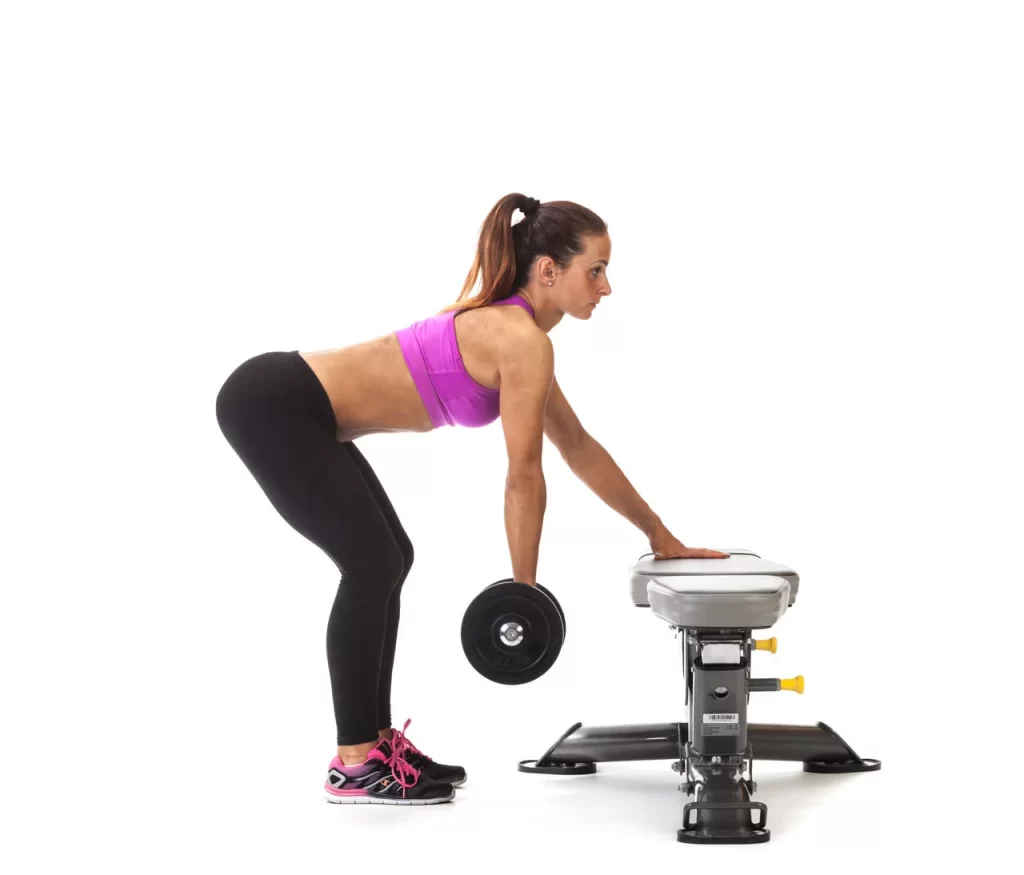
How to do it:
- Hold up a single dumbbell. For beginners, suggest using low weights.
- Step one leg back into a set-up stance with your feet out to about hip-width apart.
- Push your hips back and let your torso fall while keeping your back straight and your core tight and engaged. The knees should be slightly bent to start.
- Think about starting a lawnmower to visualize the movement.
- Pull the weight in towards your body by contracting your lats and pushing your elbow up towards the sky while using a neutral grip.
- Repeat 10 times while gradually lowering the weight back to the starting position.
- 10 repetitions should be done on the opposing side.
Single-Arm Bent-Over Row
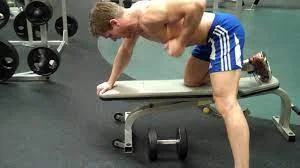
How to do it:
- Take your hand in your left hand and stand with your feet shoulder-width apart and your knees slightly bent.
- With your right hand resting on your hip and your palm facing the midline of your body, hinge forward from your hips to drop your chest towards the floor. Let your left arm extend lightly from your shoulder.
- Pull the hand towards your rib cage while bracing your core and pushing your shoulder blades together.
- Pause, then start by bending your back. There is one.
Scarecrow
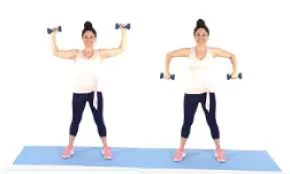
How to do it:
- Start started by taking a hip-width stance.
- Hinge at the hips to start in a posture simulating a bent-over row while holding small weights.
- Your arms should be straight down in front of you, just above your knees, and your back should be flat.
- Using your upper back muscles, pull your elbows back until you form a broken T shape.
- Place your hands in a shoulder-up position.
- Maintaining your hinge stance, raise your arms straight up to your ears.
- Following this, place them back where they were before. A repetition is one. Make 3 sets of 8 repetitions.
Bent over row
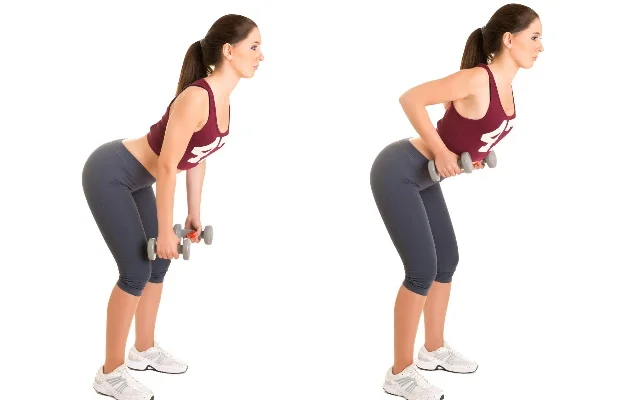
How to do it:
- Your knees should be slightly bent as you stand with your feet hip-width apart.
- With your knees bent at a 45-degree angle, bend your upper body forward.
- Your palms should be facing inward when you start with your arms fully extended in front of you. This is where everything begins.
- Pull the dumbbells towards the lower rib cage while keeping your spine neutral and your elbows close to your body. When increasing the weight, always remember to press your shoulder blades together.
- Repeat by returning the dumbbells to their starting point.
- The muscles that hold your shoulder blades together are strengthened by the bent-over dumbbell row, which enhances posture. This makes it simpler to mark them down and back while you’re standing up straight, as you can believe.
Wide dumbbell bent-over row
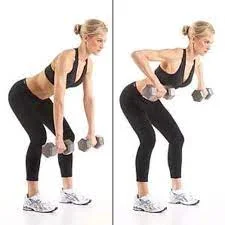
How to do it:
- Standing with your feet shoulder-width apart, face your thighs, and hold a dumbbell in each hand with the palms of your hands facing inward.
- When your body is at a 45-degree angle with the floor, hinge at your hips while maintaining an engaged core and a neutral neck.
- Dumbbells should hang lightly in front of you.
- Start rowing, bringing your elbows up towards the ceiling at a 90-degree angle.
- The top shoulder blades must be squeezed together.
- Complete 1-3 sets of 8–12 repetitions by going back to the starting position and repeating.
Quadruped single-arm dumbbell row
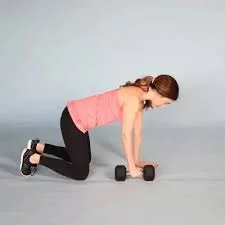
How to do it:
- Starting from a kneeling position, hold a dumbbell in each hand.
- Make sure that you have a straight back, your hands, and knees should be just below your shoulders.
- With your right arm, raise the dumbbell to your armpit while bending your elbow.
- Throughout the movement, keep your elbow tucked at your side.
- You’ll see that losing your equilibrium if you row too far.
- Repeat on the left side, bringing the dumbbell back to the starting position slowly.
- Perform 1-3 sets of 8–12 repetitions on each side.
Quadruped Single-Arm Rear-Delt Raise
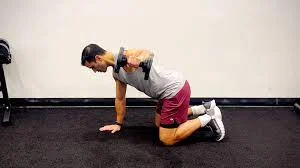
How to do it:
- Start on all fours on a mat, placing your palms and knees beneath your shoulders and your hips.
- A dumbbell should be in your right hand.
- Feel the stress in your right shoulder as you raise your arm to the side.
- Remember not to twist to the side, brace your core, while keeping a straight back.
- Dumbbell back down to the floor. It’s one rep.
- This exercise works the small muscles at the back of your shoulders and also works your core to maintain balance.
Bent-over rows with an underhand grip
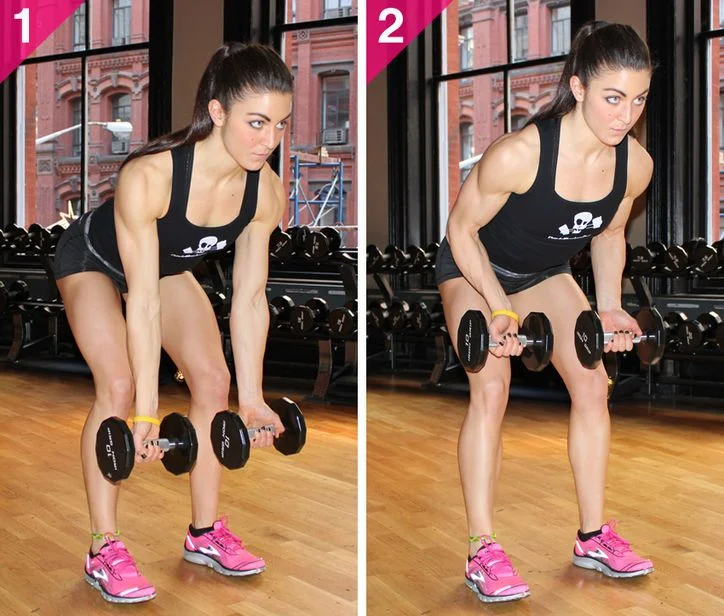
How to do it:
- In each hand, hold a dumbbell.
- Standing with your feet hip-width apart, slant your knees slightly forward before pushing your hips back and bending forward.
- Keep your back straight and your core tight and active.
- Dumbbells in hand, arms extended downward, palms outward.
- Before bringing your elbows back towards your hips, engage your back and core.
- After some time to build up muscular tension, carefully return to the beginning posture. Ten times in total.
Underhand Bent-Over Row
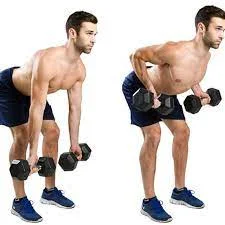
How to do it:
- Standing with your feet shoulder-width apart and your knees slightly bent, grab a set of dumbbells.
- With your arms hanging straight from your shoulders and palms facing away from you, lean forward from your hips and bring your chest towards the floor.
- Pull the weights towards your rib cage while bracing your core and pulling your shoulder blades together.
- Pause, then start by bending your back. A rep is one.
Alternating Bent-Over Row
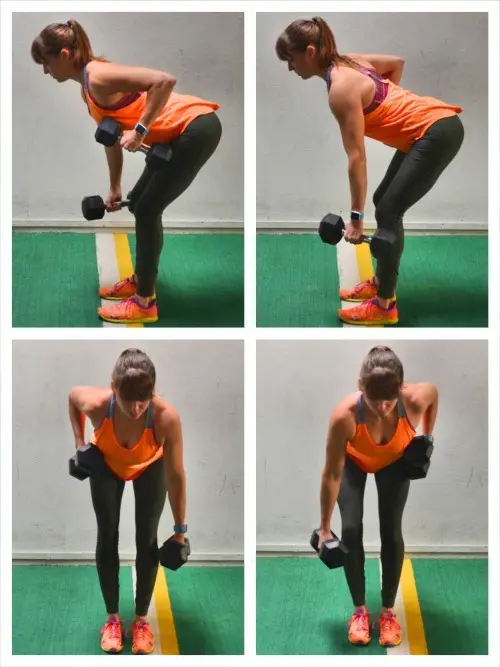
How to do it:
- As you bend down, hold a dumbbell in each hand.
- Your right hand should raise the weight to your chest and then get it again.
- Pull the dumbbell you are holding in your left hand up to your chest and then drop it again.
- Repeat as many times as needed in an alternate direction.
Plank rows
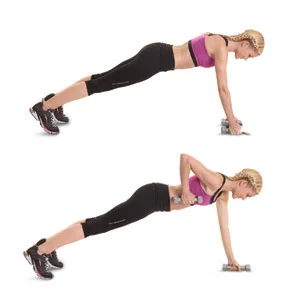
How to do it:
- Holding one dumbbell in each hand below the shoulders, start in the plank position.
- Pull the right dumbbell up into a row while pulling your shoulder inside towards your spine from this position.
- Try to maintain your right hip pointing down towards the ground instead of turning it outward as you lift the right arm up. Pull the right elbow in towards your side waist.
- After then, lower your right arm and go to the left side.
- Continue switching.
Renegade Row
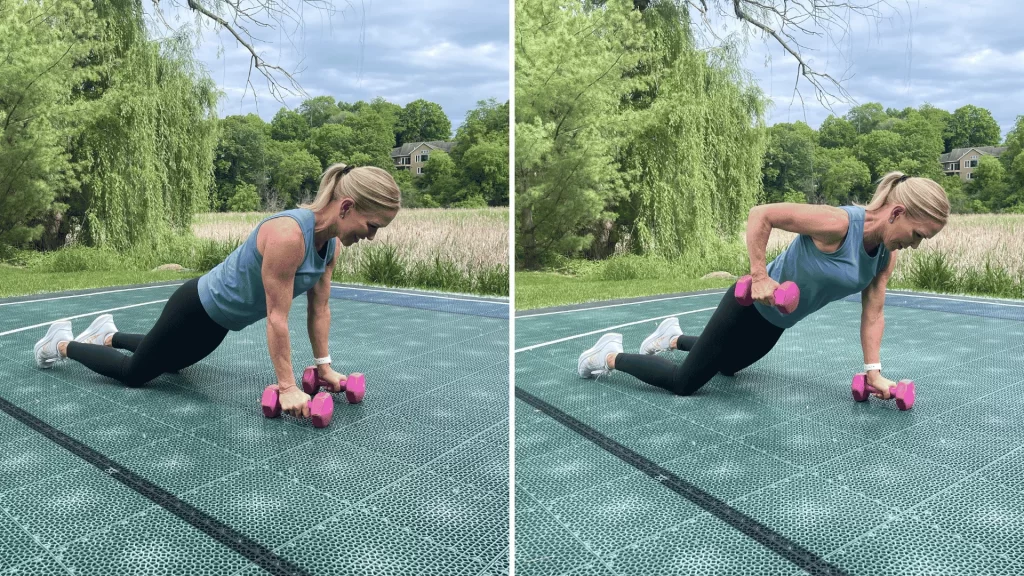
How to do it:
- Set yourself up in a high plank posture with your feet slightly wider than hip-width apart, hands on the weights, arms extended, palms facing each other, and no wrinkles at the wrists.
- Maintaining level hips and shoulders, bring the dumbbell to chest height with one bent arm.
- Row the other dumbbell while lowering the weight to the ground, then repeat the exercise.
- A rep is one.
Single-arm plank row

How to do it:
- Starting in a plank position with your left palm lying on the ground and one dumbbell below your right hand. Try holding on to a dumbbell with your left hand below your wrist if you feel any pain.
- Pulling the dumbbell towards your chest while raising your right elbow.
- Keep your right hip level with your left by pulling your shoulder blades together.
- Before performing the following rep, lower the dumbbell to the ground and tap it there.
- Before switching to the left, complete 10 repetitions on the right side.
Single-Leg Row
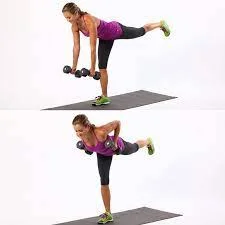
How to do it:
- Having your palm facing your midline, hold a dumbbell in your left hand.
- As you lower your body and raise your left leg until your chest and leg are parallel to the floor, hinge forward, letting the weight hang completely below your shoulder. This is where you should start.
- When the dumbbell reaches your ribs, stop.
- To begin, slowly lower your back. A rep is one.
Plank with lateral arm raise
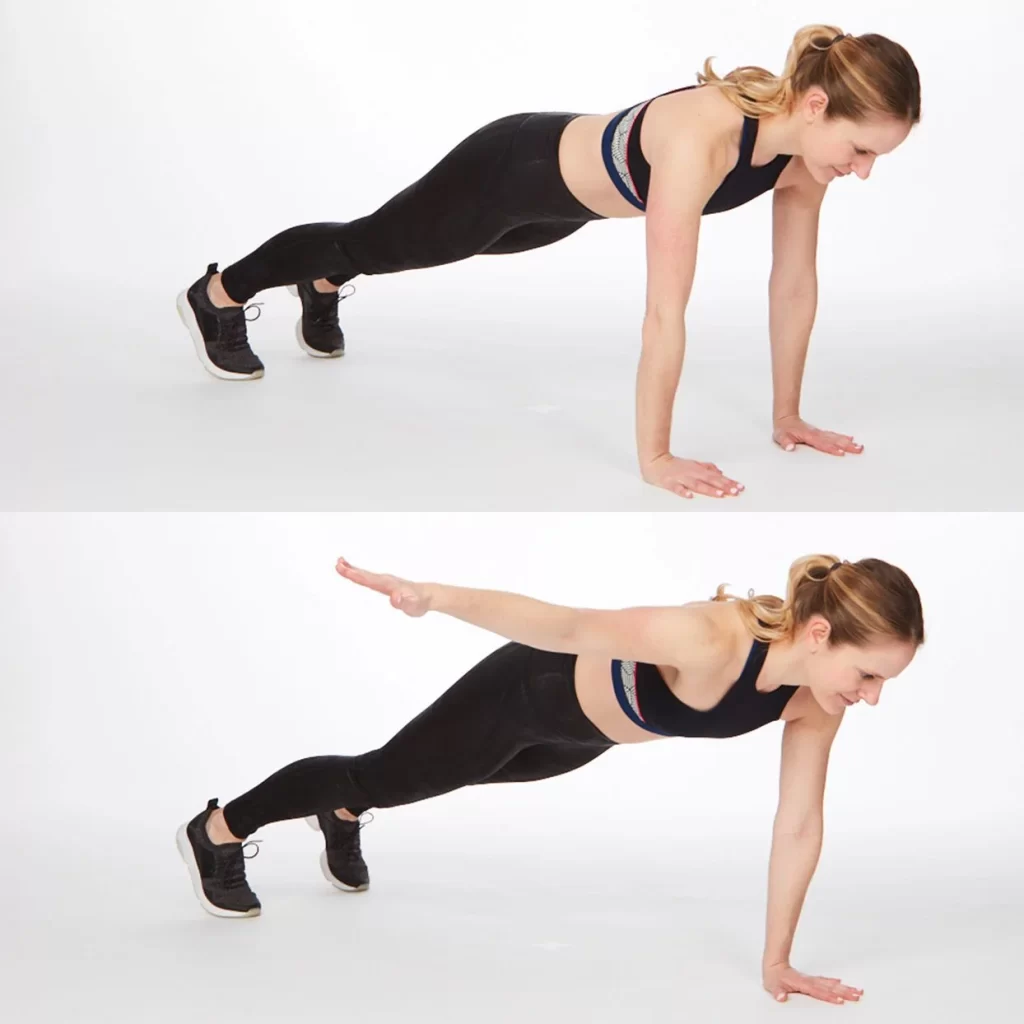
How to do it:
- Hold a dumbbell in each hand as you begin, maintaining a plank position.
- Engage your abs and hold a solid hip stance as you extend your right arm out to the right up to shoulder height.
- Continue to the other side, then come back to the center.
Pullover
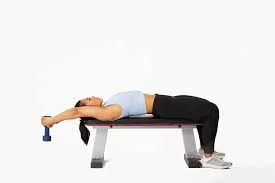
How to do it:
- Only one dumbbell is required for this workout.
- Hold your dumbbell with both hands and grasp a flat surface while lying on your back. For the ideal holding position, consider cupping one end of the dumbbell.
- Place your feet level on the floor while bending your knees.
- The dumbbell ought to be positioned over your chest.
- Keep your arms straight as you slowly move the dumbbell behind your head until it forms a 45-degree angle with the floor.
- Go back to the starting position. Ten times in total.
Superman with dumbbells
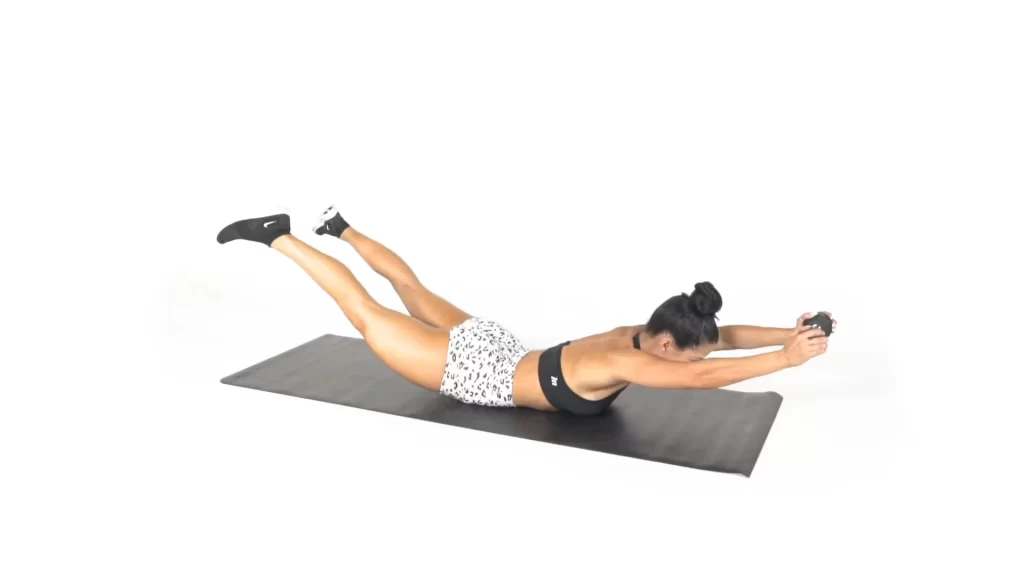
How to do it:
- Reach back throughout your body while lying face-down on your stomach, holding a dumbbell in each hand with the palms facing up.
- Squeeze your glutes and tighten your abdominal muscles as you lift your legs off the floor.
- As you squeeze your back to lift your upper body off the ground, slowly pull your head up and stare a few inches in front of you to maintain appropriate neck alignment.
- Next, extend your arms upwards towards the ceiling.
- At the top, squeeze your shoulder blades together, hold for a second, and then slowly lower yourself back down.
Romanian deadlift
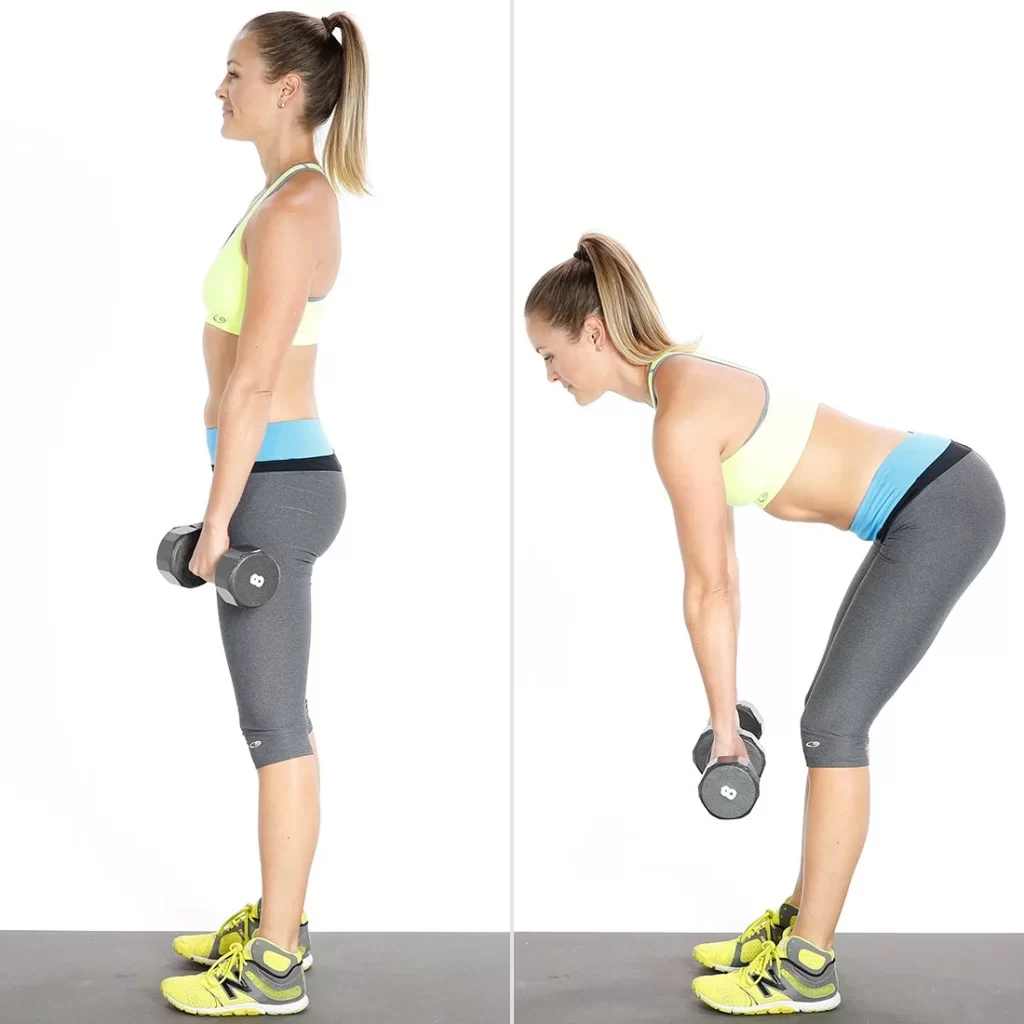
How to do it:
- Knees slightly bent, feet hip-width apart, stand.
- With your arms extended, place the dumbbells in front of your thighs.
- Pushing your hips back while keeping the dumbbells along the front of your legs, brace your core, and go down the weights towards the floor. Keep your spine neutral and your knees slightly bent throughout.
- Return to an upright stance by pressing through your heels and pushing your hips forward at the top once the dumbbells have reached your mid-shin or you have felt a stretch in your hamstring.
- Repeat.
- The muscles in the posterior chain (the back and rear of the legs) are strengthened by the Romanian deadlift. Lower back pain is also less likely as a result of these muscles’ increased strength.
T-raises
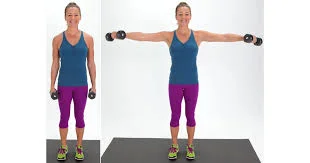
How to do it:
- Place a dumbbell in each hand while standing with your feet hip-width apart.
- The knees should be slightly bent, and the torso should be almost parallel to the ground.
- The palms of the weights should be facing forward as you build them in front of your chest.
- Maintaining straight arms, raise the weights straight out to the sides to shoulder height.
- Afterward, bring them back down.
Rear delt fly
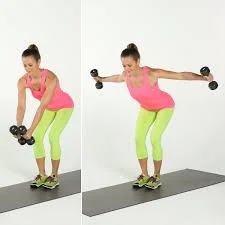
How to do it:
- Your knees should be slightly bent as you stand with your feet hip-width apart.
- With your knees bent at a 45-degree angle, bend your upper body forward.
- Your palms should be facing inward when you begin with your arms fully extended in front of you. This is where everything starts.
- Lift both arms out to the sides until they are aligned with the shoulders, elbows slightly bent. Brace your core in order to create a neutral spine. Put your attention on tightening your shoulder blades.
- Repeat from your starting position.
- The posterior deltoid, a muscle that helps in shoulder rotation, is the primary target of the rear deltoid fly. This helps avoid bending over, which is a sign of bad posture.
Single-Arm Rear Delt Raise
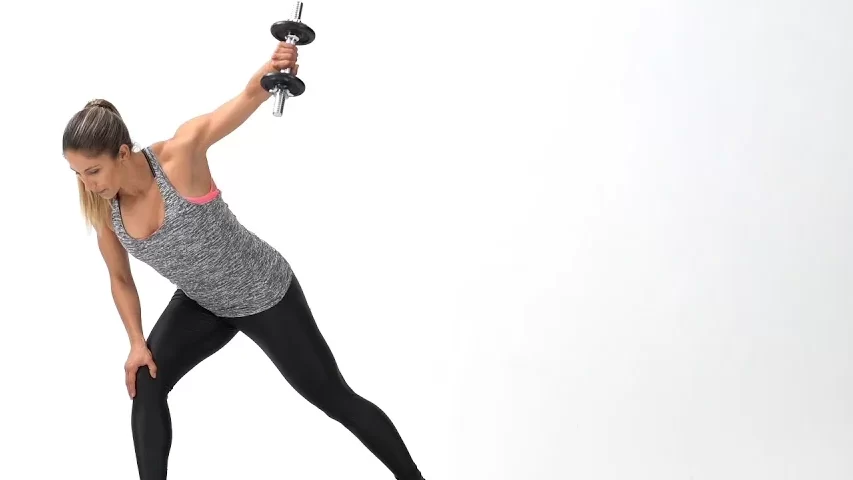
How to do it:
- Bend forward at the hips while holding a dumbbell in one hand and placing the other hand on a firm surface.
- Your hand should be indicating forward as you let the dumbbell hang straight down from your shoulder.
- Raise your arm straight back until it is parallel to your body without moving your torso.
- After pausing, move carefully back to your starting position. A rep is one.
Reverse fly
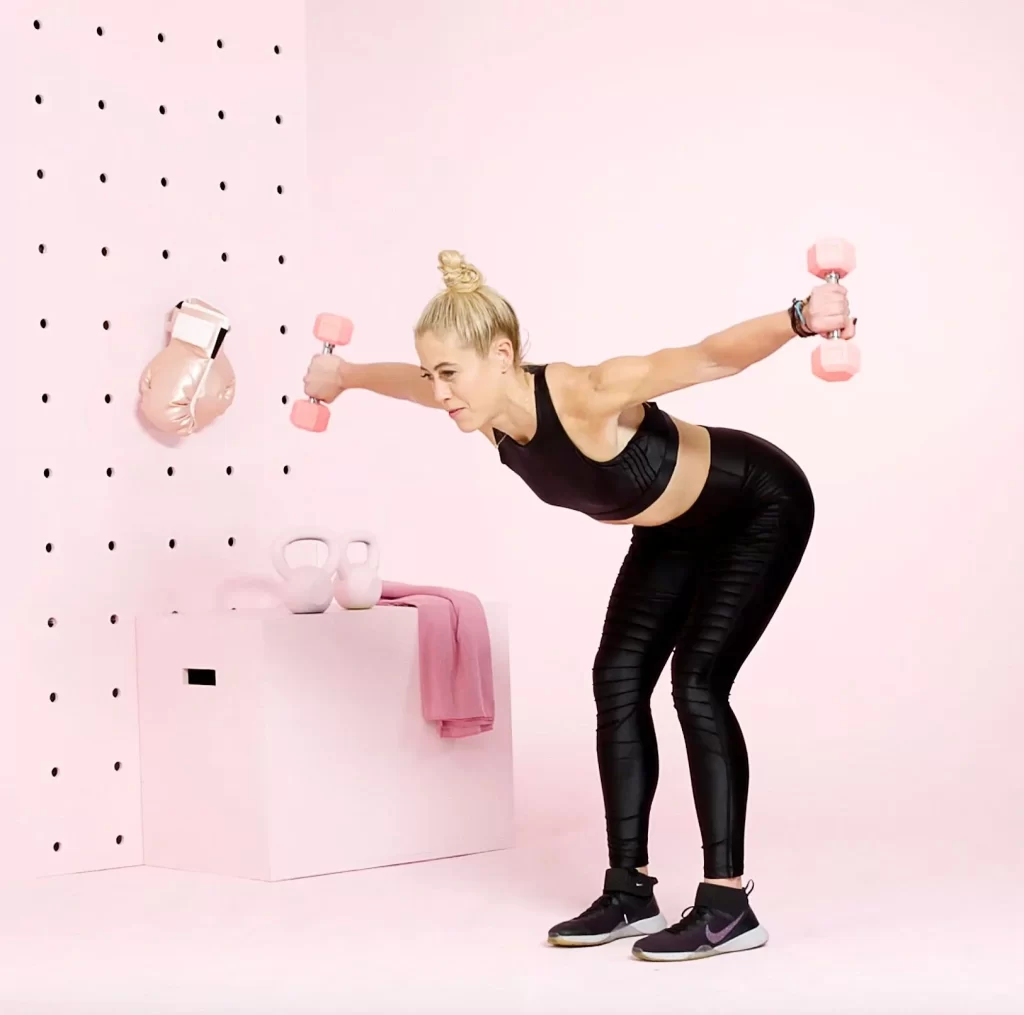
How to do it:
- In order to hang the dumbbells in front of you with the palms facing each other, leaned forward at the hips until your body makes a 45-degree angle with the floor.
- Elbows should be slightly bent.
- Lift your arms out to the sides while squeezing your shoulder blades at the top.
- Return to the starting position gradually.
- Finish 1-3 sets of 8–12 repetitions.
Alternating Reverse Fly
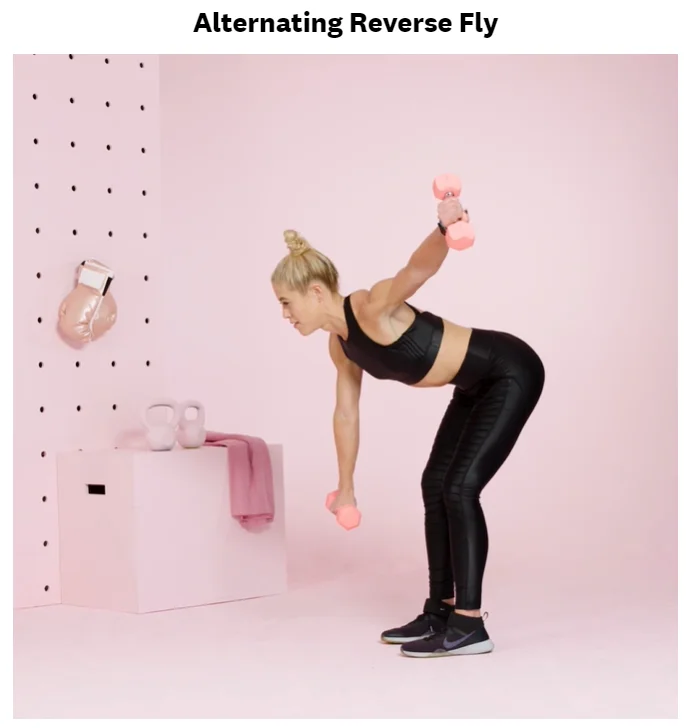
How to do it:
- Standing with your feet hip-width apart and your knees bent, grab a set of dumbbells.
- With your palms facing your body, let your arms extend straight down from your shoulders as you bend forward at the hips.
- Squeeze your shoulder blades together as you raise one arm out to the side.
- At the top, pause, then gradually go down. A rep is one.
Bent-Over Fly
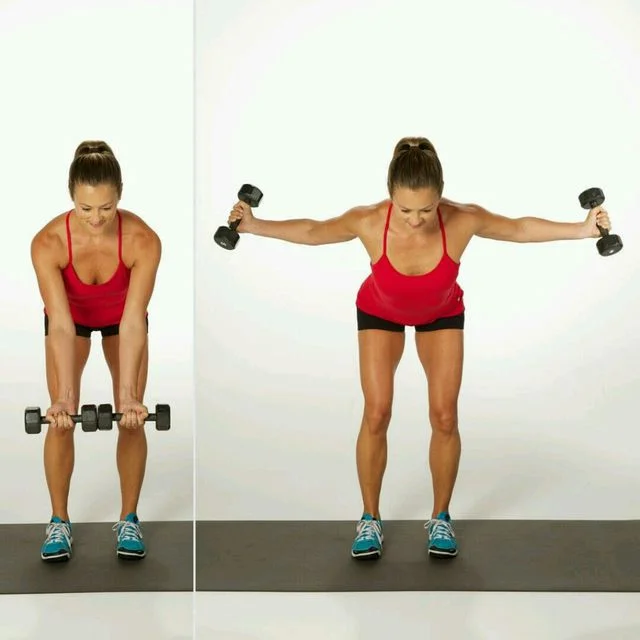
How to do it:
- Standing with your feet hip-width apart and your knees bent, grab a set of dumbbells.
- With your palms facing your body, let your arms extend straight down from your shoulders as you lean forward at the hips.
- As you raise your arms out to the sides, squeeze your shoulder blades together.
- Stop at shoulder height and go back to the beginning. A rep is one.
Deadlift
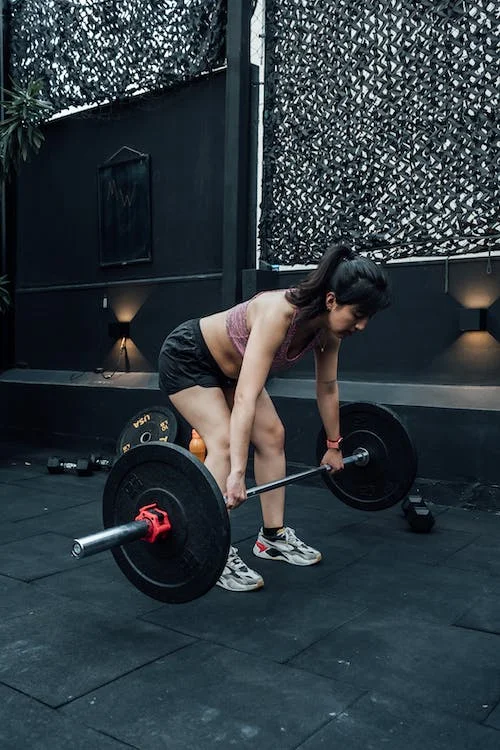
How to do it:
- Stand with your feet hip-width apart.
- With your arms fully extended and palms facing in, hold the dumbbells at your sides.
- Dumbbells should be kept along the sides of your leg as you brace your core and descend toward the ground. By concentrating on pushing your butt back, you may lower your body and bend your knees. all the while, keeping your spine neutral.
- When the dumbbells reach your ankle, push your hips forward at the top to stand up by pushing through your heels.
- Repeat.
- The muscles that are essential for keeping the torso upright—the lower back, glutes, and core—are strengthened by deadlifts. Along with the muscles along the spine, they also focus on the hamstrings and quadriceps in the lower body.
Reverse V Raise
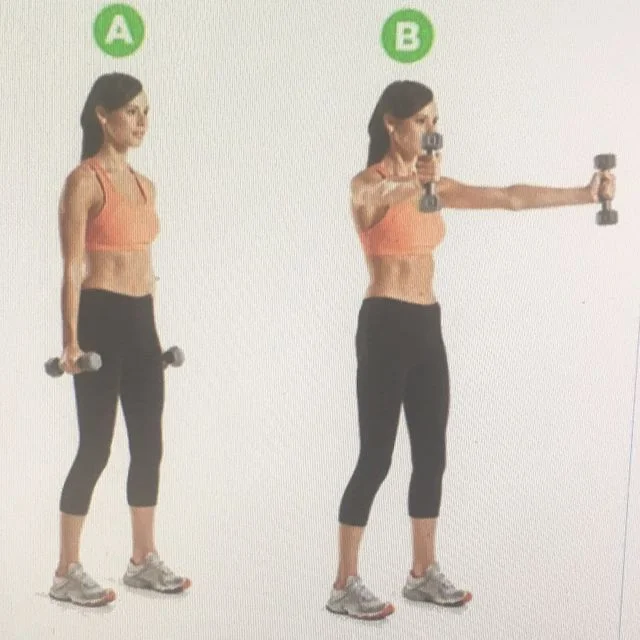
How to do it:
- On a bench or exercise ball, lie on your stomach with your hands facing in and a dumbbell in each hand.
- Keep your elbows slightly bent and stretch your arms in the shape of a V behind you.
- Lift your arms back to parallel while you strengthen your core and press your shoulder blades together.
- At the peak, pause for two to three seconds.
- Repeat by softly lowering yourself back to the starting position.
- Reverse V rises to strengthen the upper back while improving shoulder stability and mobility. Better posture is promoted by all of this.
Kickstand Deadlift
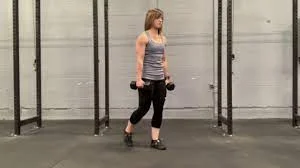
How to do it:
- Holding a dumbbell in each hand, take a hip-width stance.
- To create a staggered stance, place one foot a foot’s length behind the other, with the heel raised (as shown above). Your front leg will be put to use.
- To bring your body down, hinge at the hips. Push your buttock well back while maintaining a flat back. Your upper body needs to be almost parallel to the ground.
- Push through your front heel to stand straight while maintaining a strong core. As you create up, keep the weights towards your shins.
- At the peak, pause and squeeze your butt. It’s one rep.
- This exercise, known as a unilateral deadlift, requires more core involvement than a bilateral deadlift since your rear leg is on the ground for balance.
Barbell deadlift

How to do it:
- Place your feet shoulder-width apart as you stand behind a barbell.
- Maintaining an elevated chest, start to hinge at the hips. Slowly bend your legs and lower yourself to take up the barbell.
- Holding the bar with both hands facing you, maintain a straight back.
- Push yourself back up to a standing posture while maintaining flat feet on the ground.
- Your shoulders should be down and back during the exercise. Your back should stay straight.
- Pushing your hips back and bending your knees will help you go back to the beginning position as you lower the barbell to the ground.
- Finish 1-3 sets of 8–12 repetitions.
Prone Y Extension

How to do it:
- On a bench or exercise ball, lie on your stomach with your palms facing in and a dumbbell in each hand.
- Put your arms out in front of you in the shape of a Y, fully extended.
- As you raise your arms as high as you can over your head, strengthen your core and press your shoulder blades together.
- At the peak, pause for two to three seconds.
- Return to the starting position gradually.
- Five more times.
Seated T-Spine Openers
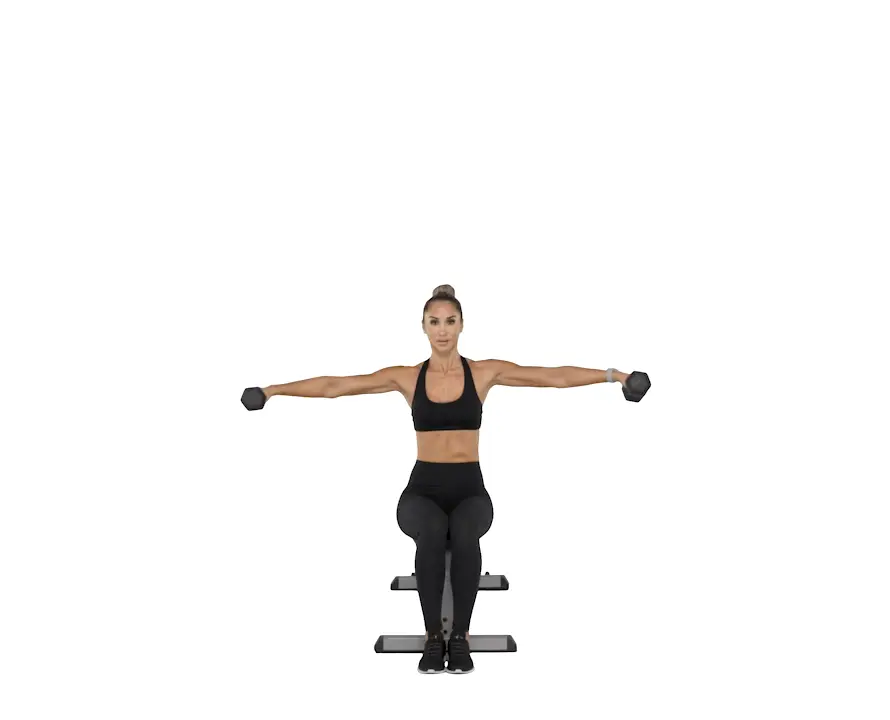
How to do it:
- Start by sitting on a bench with your elbows close to each other and your hands behind your neck.
- Starting from your upper back, raise your chest and elbows in the direction of the top.
- Avoid bending at the lower back.
- It’s one rep, then.
- Perform three sets of 8–10 reps.
Farmer’s Carry
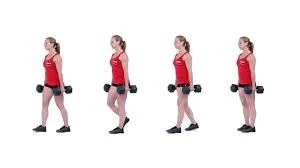
How to do it:
- The farmer’s carry is another age-old exercise that involves picking up heavy weights and carrying them while walking.
- Usually for a predetermined amount of time or a given amount of distance.
- In any event, if you focus on drawing in your shoulder blades and tightening your abdominals, you develop a larger, stronger back (and a more strong body overall).
Safety advice and precautions:
Some important advice and security precautions should be maintained in mind before you begin these workouts. Although exercise is important for your fitness, performing it inappropriately or without sufficient preparation could lead to harm.
- Warm-up: Start by doing a little warm-up. This can include brisk walking, stationary jogging, or even mild exercise. It’s crucial to warm up your muscles and get your blood moving before starting an exercise session.
- Start with lighter weights: If you have never used dumbbells before or it has been a long since you worked out, start with lower weights. Slowly increase your weight as you gain strength.
- Form and technique: Concentrate on maintaining good form while lifting large objects. Ineffective instruction and harm might result from poor form.
- Listen to your body: If you experience any pain or discomfort while performing any exercise, stop right once. To prevent damage, it is critical to pay careful attention to your body’s warnings.
- Incorporate stretching: After your workout, require some time stretching. This will help in preventing muscular stiffness and promote healing.
FAQs
Dumbbell rows are an excellent way to exercise to perform with correct posture. This easy exercise strengthens the lats and traps, two essential postural muscle groups that oppose the forces of chest bending over.
Correcting poor posture requires both stretching and strengthening of the muscles in the upper back, chest, and core.
Since poor posture requires the use of symmetrical muscles for support, it over time causes deep supporting muscles to atrophy from lack of usage. Unused, weak muscles have a tendency to contract, which can cause compression of the vertebrae in the spine and subsequent degeneration of posture.
Try moving your head slightly from side to side, front to back, or in little circles. Spend two to three minutes every day resting down on the ground. Without the use of any cushions or other supports, execute this exercise comfortably. As a consequence, your posture will improve as your body is let to return to its normal resting position.
The neck and small upper back muscles that assist pull the shoulders back may become weak and the chest muscles may shorten as a result of keeping the same position continuously. The major back and neck muscles, such as the trapezius and rhomboids, have to work harder as a consequence, and as a result, they become stiff and sore.
The deadlift is still the most effective exercise for the back since it works every muscle in your posterior chain and strengthens your core and lats at the same time. Going heavy is advised here, and as your pulls grow stronger, you’re going to observe how much stronger and more defined your back gets. Do not skip deadlift day.
Along with other muscle groups, the hamstrings and large back muscles are essential for maintaining good posture. These postural muscles, along with others, prevent us from moving forward when they are functioning properly. Our postural muscles also keep us balanced when we are moving.
Good posture tips:
1. Put your shoulders back and maintain a tall, straight posture.
2. Keep your head level and in alignment with your body.
3. Pull in your stomach.
4. A shoulder’s breadth should be maintained between your feet.
5. Avoid letting your knees lock.6.Put the bulk of your weight on your feet’s soles.
7. You must have space for your hands to rest at your sides.
Symptoms of Poor Posture
1. Rounded shoulders and tightened pecs A common sign of poor posture among office employees is their abnormally rounded shoulders and tight chest muscles.
2. Moving the head forward.
3. Back hunched (kyphosis).
4. Recurrent headaches.
4. Pelvis tilted.
5. Neck and backache.

